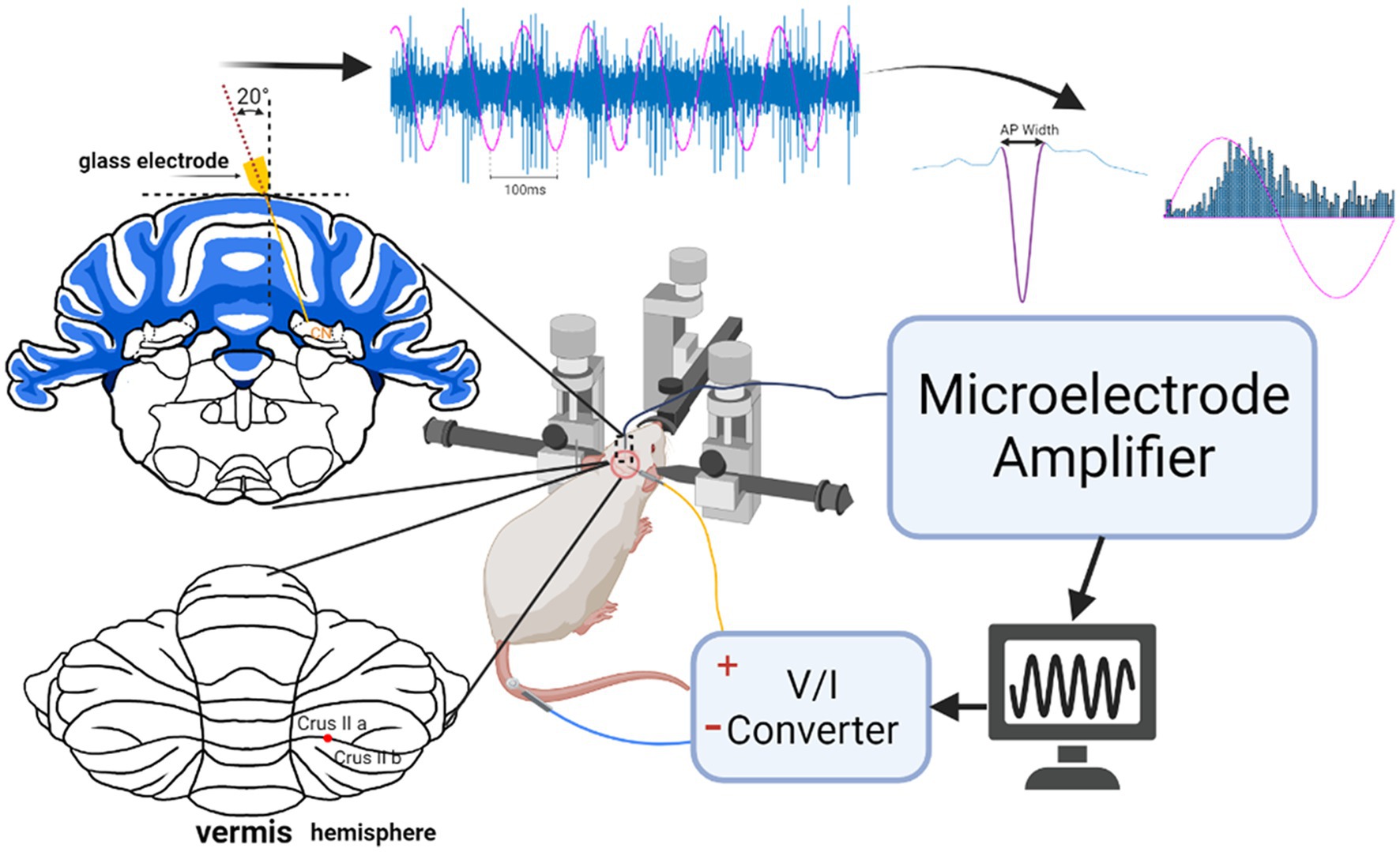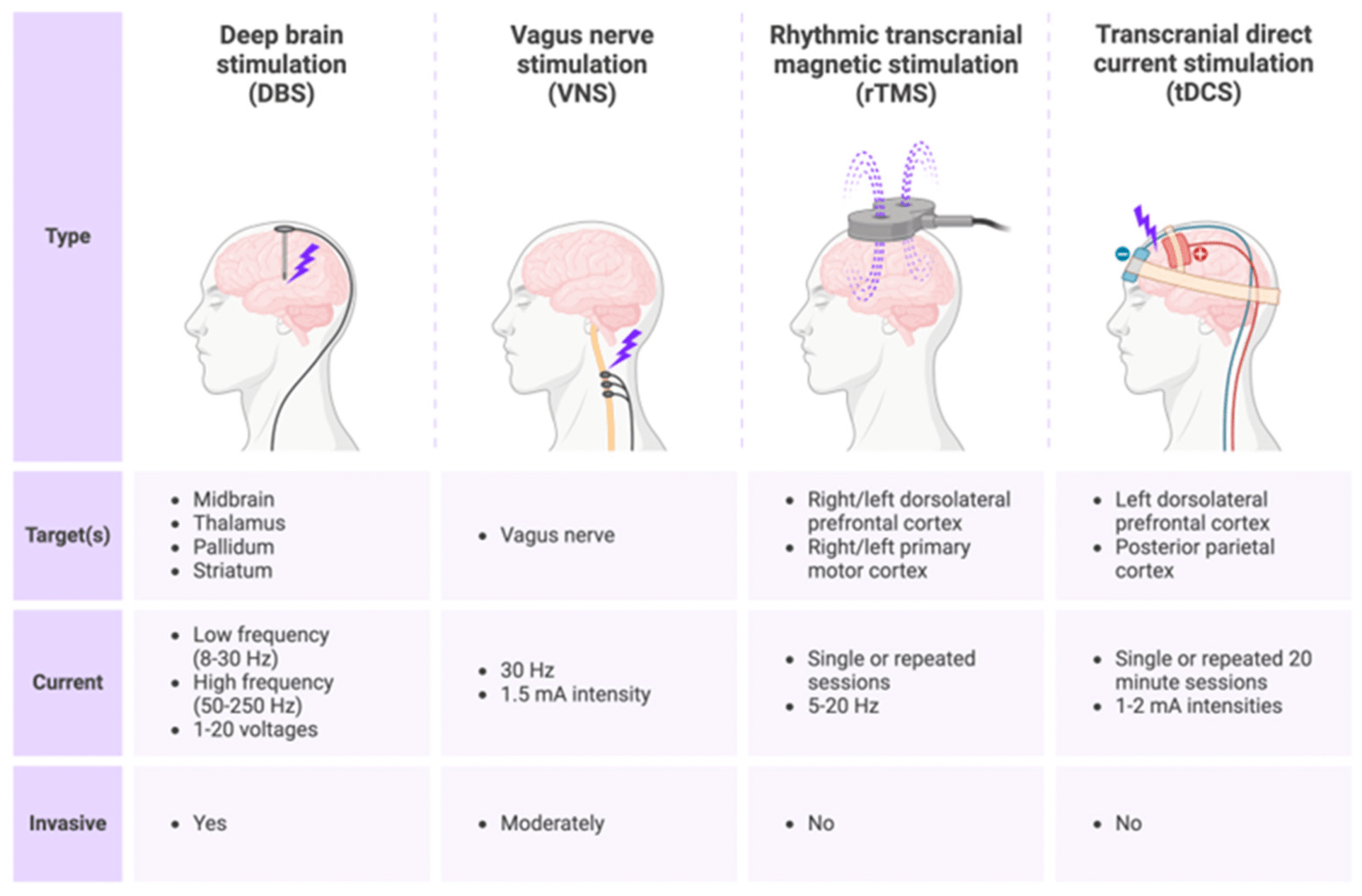Welcome to NeuroTechInsider.com, your trusted resource for cutting-edge reviews and expert insights on the most advanced non-invasive neurostimulation and sleep devices available today. Whether you’re navigating insomnia, anxiety, cognitive fog, or just looking to optimize your brain’s full potential, you’re in the right place.
In this guide, we’ll break down what non-invasive neurostimulation is, why it matters, and how leading-edge technologies like NeuroVIZR, Apollo Neuro, and Audicin are bringing neuroscience out of the clinic and into your hands.
Forget pills. The future of brain health is electric — literally.
What Is Non-Invasive Neurostimulation?
Simply put, non-invasive neurostimulation involves using external devices to modulate brain activity — without surgery, implants, or chemical drugs. Instead, these methods rely on magnetic fields, gentle electrical currents, sound waves, and even focused ultrasound to influence neural circuits in highly targeted ways.
Clinicians, researchers, and now everyday users are turning to these methods to address a wide spectrum of needs, including:
- Treatment-resistant depression
- ADHD and executive dysfunction
- Chronic pain and fibromyalgia
- Insomnia and burnout recovery
- Peak performance and neuro-enhancement
These techniques are increasingly backed by peer-reviewed studies, FDA approvals, and real-world success stories. The result? A new frontier in neuroscience that doesn’t require a hospital badge to access.
Benefits of Non-Invasive Brain Stimulation
Why is neurostimulation taking off? Here’s what makes it different:
- Drug-free alternative with fewer systemic side effects
- Personalized protocols based on your brain state
- Portable and wearable devices now available
- Evidence-backed tools for real therapeutic outcomes
At NeuroTechInsider, we’ve tested and reviewed over a dozen devices that harness this tech, from NR9’s 40Hz light therapy to CES-based vagus nerve stimulators. Now let’s dive deeper into how the tech works and which methods are leading the charge.
Inside the Tech: Main Types of Non-Invasive Neurostimulation
1. Transcranial Magnetic Stimulation (TMS)
TMS uses a magnetic coil placed near your scalp to send precise pulses into your brain. These pulses induce small electrical currents that can excite or inhibit specific brain areas.

This method is already FDA-approved for major depressive disorder, OCD, and migraines. Newer versions like Stanford’s SAINT protocol — which combines TMS with real-time EEG — show up to 90% remission rates in treatment-resistant depression. That’s game-changing.
Devices to watch: While traditional TMS systems require a clinical setting, wearable TMS headbands are in development. We’re tracking the progress closely.
2. Transcranial Direct Current Stimulation (tDCS)
tDCS works by sending a constant, low-intensity electrical current between two electrodes placed on your scalp. It’s simple, safe, and surprisingly powerful.
What it does:
- Anodal stimulation increases cortical excitability — think faster reaction times, improved memory, better focus
- Cathodal stimulation reduces overactivity — useful for calming anxiety, OCD, or pain sensitivity
tDCS has gained traction not just in rehab settings (like stroke recovery), but also in consumer devices targeting cognitive enhancement, ADHD, and even eSports performance.
3. tACS and tRNS – Rhythm Hackers
Transcranial Alternating Current Stimulation (tACS) and Transcranial Random Noise Stimulation (tRNS) deliver varying or randomized electrical patterns to your brain. Instead of pushing or dampening activity, these methods aim to synchronize brain rhythms.
Why rhythms matter: Your brain functions in wave frequencies — delta (sleep), theta (deep relaxation), alpha (calm focus), beta (alertness), and gamma (high processing). These techniques let you tune specific bands depending on your goals.

Early research shows benefits in working memory, attention span, and even language acquisition. We’ll explore devices that make this accessible at home later in the series.
4. Transcranial Focused Ultrasound Stimulation (tFUS)
tFUS is the most advanced and least understood technique in this lineup. Using ultrasound waves — yes, the same ones used in medical imaging — this method can target deep brain structures without damaging overlying tissue.

Applications include:
- Modulating memory centers in Alzheimer’s disease
- Interrupting seizure pathways in epilepsy
- Rehabilitating motor function in stroke survivors
This tech isn’t commercially available for consumers yet, but clinical trials are showing enormous promise.
What’s Next?
In Part 2, we’ll dig into the remaining techniques — Temporal Interference Stimulation (TIS) and taVNS — as well as dive deeper into real-world results, cost comparisons, and how you can build a neurostimulation stack at home.
Meanwhile, check out our top-rated reviews on:
- NeuroVIZR – Light & sound therapy for ADHD and sleep
- Sensate – Vagus nerve stimulation for calm and clarity
- Apollo vs Neuvana – Best for stress recovery?
The brain is plastic. You don’t have to settle for how it feels today.
Coming next: Deep dive into personalized neuromodulation, EEG biofeedback, and how to build a stack using CES, PEMF, and more.
5. Temporal Interference Stimulation (TIS)
Among the newest frontiers in neurostimulation is Temporal Interference Stimulation (TIS) — a technique that uses multiple high-frequency electrical fields to stimulate deep brain areas while leaving superficial regions unaffected.
This is a huge leap. Traditional tDCS and TMS can only reach a few centimeters into the brain. But with TIS, researchers can now target regions like the hippocampus or thalamus — all without opening the skull.
What’s exciting about TIS:
- Selective targeting of subcortical structures
- No need for invasive implants
- Potential applications for Parkinson’s, epilepsy, and depression
Although still in experimental stages, TIS holds serious promise for future consumer-grade brain tech. We’ll be tracking how it compares to non-invasive light-sound methods like NeuroVIZR in future reviews.
6. Transcutaneous Auricular Vagus Nerve Stimulation (taVNS)
This one’s for your ear — literally. taVNS stimulates the vagus nerve through the outer ear, offering a non-invasive way to tap into the body’s parasympathetic nervous system. That’s the “rest and digest” mode we all desperately need in today’s overstimulated world.
Clinically, taVNS is being explored for:
- Chronic pain and inflammation
- Generalized anxiety disorder (GAD)
- Improving sleep onset and REM cycles
- Reducing symptoms of PTSD and depression

Devices like Sensate and Neuvana are already making this form of stimulation accessible to consumers. At NeuroTechInsider, we’ve seen firsthand how taVNS can lower cortisol, reduce HRV variability, and help users fall asleep faster and wake up sharper.
Real-World Applications
Insomnia & Sleep Optimization
From 40Hz light-sound devices to vagus nerve stimulation and CES headsets, neurostimulation has carved a strong niche in the sleep tech market. Instead of sedatives, we now have:
- Audicin for calming mental chatter with AVE (Audio-Visual Entrainment)
- NeuroVIZR to sync circadian rhythms using gamma wave stimulation
- Apollo Neuro to stimulate calm via haptic vagal patterns
These tools are being validated in clinical studies as well as user-generated biofeedback results — from improved deep sleep to increased sleep efficiency scores on Oura Ring and WHOOP.
Mental Health & Mood Regulation
Depression, anxiety, burnout — these aren’t just buzzwords. They’re the neurological fallout of a modern, hyper-connected lifestyle. Neurostimulation offers alternatives where traditional therapy or medication alone may fall short.
Notable breakthroughs include:
- Stanford’s SAINT TMS protocol with 90% remission rate
- tDCS trials showing reduced anxiety in under 10 sessions
- taVNS helping veterans with PTSD in clinical settings
“It’s not just about stimulation — it’s about neural recalibration.”
ADHD, Brain Fog, and Cognitive Performance
Neurostimulation can increase dopamine signaling, support executive function, and sharpen attention — without amphetamines.
Whether it’s students prepping for exams or professionals fighting afternoon crashes, devices like tDCS, tACS, and light-based gamma stimulation are emerging as tools for cognitive uplift.
At NeuroTechInsider, we’ve tested these devices using tasks from CogniFit and BrainHQ, and the results are promising — especially when stacked with breathwork or meditation.
Where Is This Technology Headed?
- Personalized Stimulation: AI-driven adjustment of pulse widths, waveforms, and session durations based on EEG or HRV feedback
- Portable Devices: Fully wearable, wireless, app-integrated tools for daily self-regulation
- Diversity in Research: Expanding trials beyond homogenous populations to better reflect neurodiversity
- Consumer-Clinician Collaboration: Shared data from at-home devices informing better diagnoses and protocols
We’re also excited about hybrid devices that combine tDCS with taVNS or AVE — creating powerful synergies across brain systems.
FAQs About Non-Invasive Neurostimulation
Q: Is neurostimulation safe for daily use?
Yes — when used as directed. Most consumer-grade devices are low-intensity and include built-in safety protocols.
Q: How soon will I feel results?
Some users feel shifts in mood or focus within a session, while others report cumulative benefits over several days or weeks.
Q: Can I combine neurostimulation with supplements or meditation?
Absolutely. In fact, many users find that combining neurotech with practices like breathwork, mindfulness, or nootropics enhances the effect.
Q: Are these devices approved by regulatory agencies?
Many are FDA-cleared or undergoing trials. Check our individual device reviews for specifics.
Final Thoughts: The Brain is Ready. Are You?
We’re standing at the intersection of neuroscience, technology, and self-mastery. What used to be locked behind lab doors is now in your pocket, your palm — your power.
If you’re ready to shift your mood, sharpen your focus, or reclaim your sleep — without pills or guesswork — then you’re exactly who we created NeuroTechInsider.com for.
Start with our top picks:
Or explore our full database of in-depth reviews to find the tech that fits your goals, biology, and lifestyle.
The future of mental health is wearable. And it’s already here.
https://pub.mdpi-res.com/biosensors/biosensors-14-00335/article_deploy/html/images/biosensors-14-00335-g002.png?1720663545
